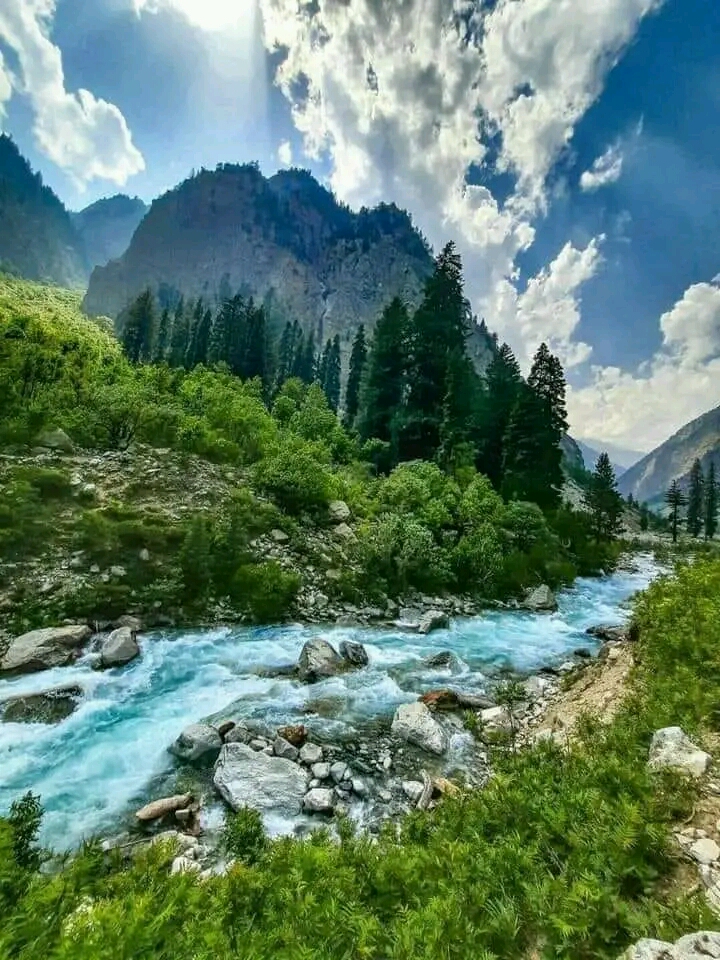Gilgit Baltistan
Gilgit-Baltistan, a region in the northernmost part of Pakistan, is renowned for its breathtaking landscapes, towering peaks, rich cultural heritage, and vibrant history. This region, often referred to as the "jewel in the crown of Pakistan," offers an array of attractions for travelers, from adventure enthusiasts to cultural explorers.
Geographic and Scenic Beauty
Gilgit-Baltistan is home to some of the world's highest mountains, including K2, the second-highest peak in the world. The region boasts a diverse range of landscapes, from the lush green valleys of Hunza and Skardu to the rugged terrains of the Karakoram and Himalayan mountain ranges. The stunning natural beauty includes crystal-clear lakes, such as Sheosar and Satpara, and the magnificent glaciers like Baltoro and Biafo.
Hunza Valley is perhaps the most famous destination in Gilgit-Baltistan. Known for its stunning beauty, the valley is surrounded by majestic peaks like Rakaposhi and Ultar Sar. The terraced fields, apricot orchards, and the ancient Baltit and Altit forts add to the valley's charm. Skardu Valley, another highlight, serves as the gateway to some of the world's most challenging and beautiful mountain expeditions, including those to K2, Broad Peak, and the Gasherbrum peaks.
Adventure Tourism
Gilgit-Baltistan is a paradise for adventure seekers. The region offers world-class trekking, mountaineering, and climbing opportunities. The Karakoram Highway, often referred to as the Eighth Wonder of the World, provides a thrilling road journey through the heart of the Karakoram Range, connecting Pakistan with China.
Trekkers can explore routes like the K2 Base Camp trek, which offers an up-close view of some of the highest peaks in the world, and the Fairy Meadows trek, known for its stunning views of Nanga Parbat, the "Killer Mountain." For those interested in rock climbing, the Trango Towers present a formidable challenge.
Cultural Heritage
Gilgit-Baltistan is rich in cultural diversity, with a blend of different ethnic groups including Balti, Shina, Wakhi, and Burusho communities. Each group has its own unique traditions, languages, and customs. Festivals such as the Shandur Polo Festival and the Jashn-e-Nowruz celebrate the local culture and heritage, providing an immersive experience for visitors.
Historical sites abound in the region, with ancient Buddhist rock carvings and petroglyphs scattered throughout. The region's historical significance is further highlighted by the ancient Silk Route that passed through it, facilitating trade and cultural exchange between the East and West.
Hospitality and Cuisine
The people of Gilgit-Baltistan are known for their warm hospitality. Visitors can experience this firsthand by staying in local guesthouses and homestays, where they are often treated as honored guests. The local cuisine is another highlight, with dishes like chapshuro (meat-filled bread), mamtu (steamed dumplings), and a variety of apricot-based dishes reflecting the region's agricultural produce.
Accessibility
Gilgit-Baltistan is accessible by air and road. The Gilgit and Skardu airports receive regular flights from Islamabad, though flights are subject to weather conditions. By road, the Karakoram Highway connects Gilgit-Baltistan to Islamabad, offering a scenic but long journey through mountainous terrain.













